November 27, 2017, by Liz Cass
University alumnus goes into the blue…
The mesmerising displays of the alienesque cuttlefish, the remarkable sex-changing transformation of the kobudai, the incredible tool-wielding tuskfish – the BBC’s awe-inspiring Blue Planet II has thrilled audiences with its jaw-dropping exploration of life beneath the waves. One of the talented team behind the series’ stunning visuals is Emmy Award-winning cinematographer and University of Nottingham Alumnus Roger Munns (Mathematics, 1996). In this blog he takes us beneath the surface to reveal what it takes to capture the amazing stories of the fascinating characters who call our oceans home.
“Before we even begin to film, the production team spend six months researching the stories,” explains Roger. “They talk to scientists, divers and cameramen to try and find compelling new underwater stories. We’re incredibly fortunate that there have been so many new scientific discoveries which have led to completely new behaviour being filmed for the series.
“The standard of research and production is so high that every sequence we set out to film was amazing in its own right. The cuttlefish sequence (Coral Reefs) stands out as one of the most incredible displays I’ve filmed. Their skin contains millions of tiny cells which the cuttlefish can turn on and off to create amazing patterns. While hunting crabs, it sticks two tentacles out to the side and basically turns into a spaceship, with vivid black and white bands running over its body. But that makes it very visible to predators, such as sharks, so it has to then turn offence into defence and camouflage itself against the background to avoid becoming someone else’s prey. It’s just awesome to behold.
“My personal favourite though is the clownfish sequence (Coral Reefs). It’s such an intimate story, all shot within a couple of metres of an anemone, but the behaviour is so unusual and the characters are so wonderful. We spent over 120 hours on closed circuit rebreathers patiently waiting for the male clownfish to leave the security of his anemone and risk his life to push back an object that the female could lay eggs on. It’s also Sir David Attenborough’s favourite sequence so I can’t really argue with that!”
Spending time with some of the world’s most fascinating creatures is an enviable perk of the job when your office is the ocean. But there can be challenges – and danger – lurking in the deep.
“There’s always a lot of planning and risk assessment that goes into every shoot to minimise risk. However, I did still manage to get a nasty sting from a stonefish during one shoot. I put my hand down in the sand to steady myself and unfortunately, he was buried beneath me. Completely my fault – but boy did it hurt! We’re trained to deal with situations like that so I got the wound in hot water as soon as possible and I was back in the water filming again pretty quickly.
“You need to have a massive amount of patience to stay motivated during long shoots. It can be hard, especially when conditions are challenging or we aren’t getting the shots we need. Sometimes your efforts can feel futile but you have to persevere and keep a positive attitude. While waiting for hours for turtles to arrive at a cleaning station, we even resorted to playing underwater charades to keep our spirits up! But when it comes together and you get the shots you need, it really is all worthwhile.”
“The series has amazing
stories and visuals throughout. Shooting across so many episodes on the series, and especially Coral Reefs, meant that I was able to help develop the style of some of the sequences. It’s very much a collaboration between the producers and the cameraman – on Coral Reefs, we really tried to immerse the viewer inside the reef using a special scope lens which gives you a fish-eye perspective.
“Up next is Green Seas, which is going to be absolutely gorgeous. I did some work on the final episode, Our Blue Planet, which is concerned with the future of our oceans. I took part in a really interesting shoot with Steve Simpson, a scientist who is revealing why sound is so important to marine life. There are some big issues facing the underwater world. I hope that series’ like Blue Planet II will show how beautiful and important these underwater ecosystems are. If viewers are inspired to care more about the underwater realm and the creatures that live there then hopefully we’ll start to see more positive action towards protecting them.”
he most-watched British show this year, the success of Blue Planet II is a testament to the passion, energy and dedication of the talented team behind the series. And for our intrepid underwater cameraman, an unforgettable chance to be part of this extraordinary landmark in natural history filmmaking.
“It’s been an absolute privilege to work on Blue Planet II. The Blue Planet is such an iconic series, and an inspiration to me as a budding cameraman at the time. If you’d told me 15 years ago that I’d shoot a story on the sequel, I’d have been over the moon, so to have been able to shoot 10 sequences across the series is really an honour.
“It’s a bit overwhelming to think that millions of people around the world are seeing my work. I’m really proud of my work on the series, particularly the Coral Reefs episode. The producer, Jonathan Smith, and the team put so much passion and energy into making it such a spectacular and fascinating insight into reef life. I’m thrilled to have played a part in that effort and to have worked alongside such a talented and committed bunch of people for the past four years to produce this amazing series. Every episode is a treat – I’ll be tuning into each one!”
Roger’s Blue Planet II log book
Countries visited: Australia, Bahamas, Costa Rica, Indonesia, Japan, Malaysia, Maldives
Days in the field: 150
Rebreather hours logged: 400 hours
Total dive time logged: 560 hours
Longest continuous dive: 253 minutes
Episodes sequences shot for: One Ocean (2), Coral Reefs (4), Big Blue (1), Our Blue Planet (2)
You can follow more of Roger’s underwater adventures on his website and Instagram – plus, on 24 January Roger answers your questions on what it’s like to work beneath the waves in our exclusive alumni webinar. Register your interest →
No comments yet, fill out a comment to be the first

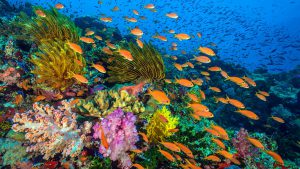
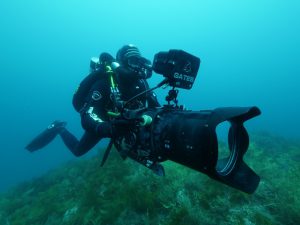
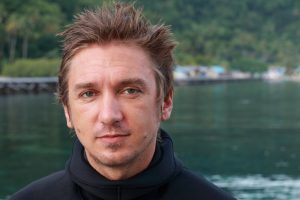
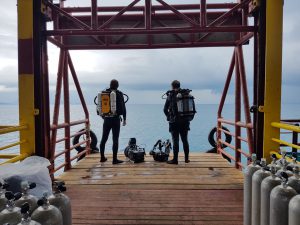
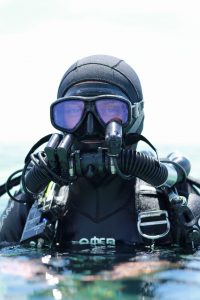
Leave a Reply